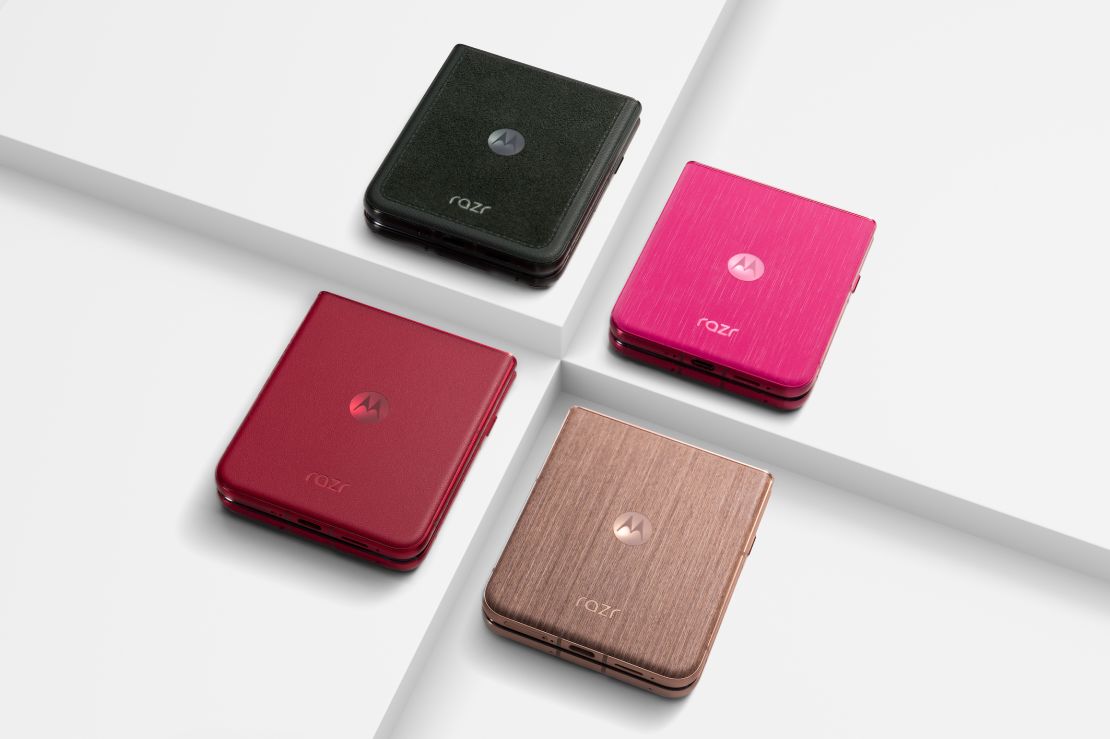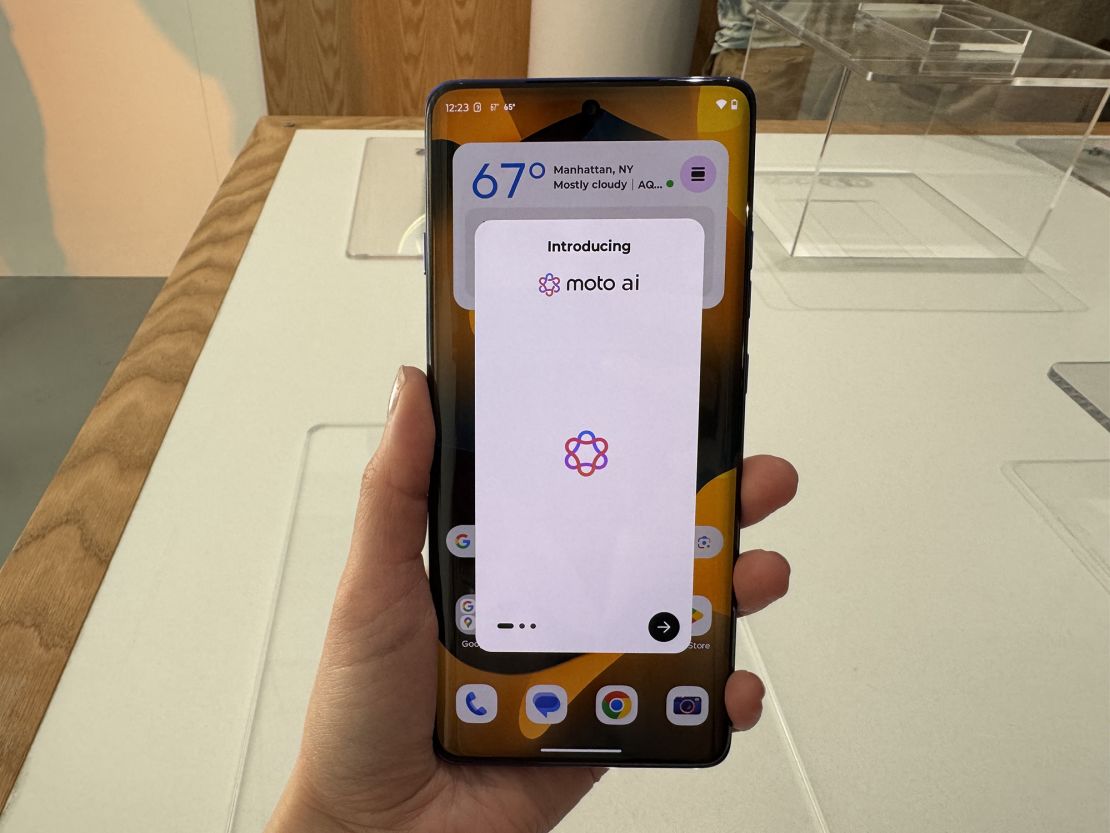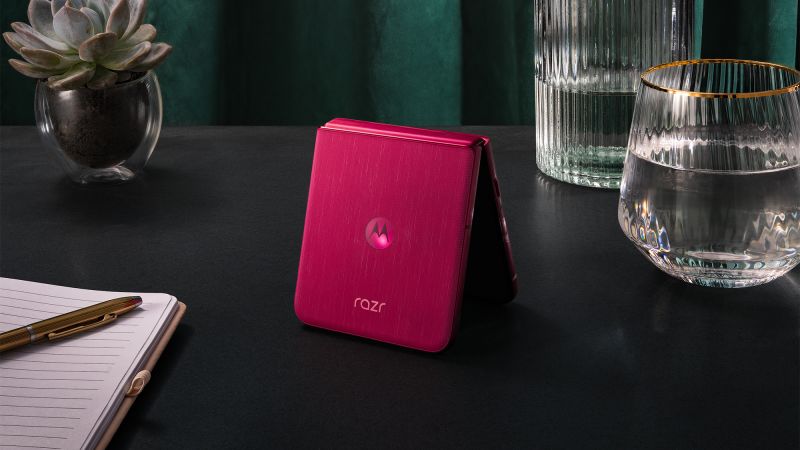New York
CNN
—
Motorola on Thursday debuted new versions of its Razr flip phone with artificial intelligence-powered features from its own AI technology as well as that of several companies, including Perplexity, Meta and Microsoft and Google.
The announcement comes as Google takes the courtroom after a federal judge found that the search giant holds a monopoly in the search market. This has stoked concerns that it could similarly end up controlling the AI industry. The prominent placement of Google’s search engine on Android phones helped it achieve that monopoly status, court filings say.
But the new Razr, Razr Plus and Razr Ultra phones, which launch on May 15, are said to be the first phones with Perplexity’s AI app preinstalled – potentially pointing to a future in which Google shares more of the spotlight with its rivals. Perplexity is an AI-powered search engine and research tool that is available on the web and through an app.
“It’s a big day for the future of smartphones,” Aravind Srinivas, CEO of Perplexity, said during a Motorola press event Wednesday.
Like Apple (AAPL) and Samsung, Motorola is pushing AI as the major selling point of its new phones. But unlike those two companies, Motorola’s phones feature a cocktail of AI models and services from several different providers.
It’s not unusual for phone makers to partner with other service providers. For example, Apple works with OpenAI to integrate ChatGPT’s capabilities into Siri, and Samsung partners with Google to power some of the AI features on its Galaxy phones. But incorporating technology from four companies in this way is rare.
“We are seeing around 30% of people at least are using four different brands in AI (on) their phones,” Maria Jose Martin, director of North American product marketing for Motorola, told CNN.
Motorola’s new flip phones include AI tools that can do things like analyze what’s on a phone’s screen to provide suggestions and summarize notifications. For example, if a person is browsing Pinterest for birthday party ideas, the phone’s Next Move feature, which incorporates Perplexity’s technology, might use recommend generating an image that can be used on a party invitation.

The Razr Ultra, the most expensive phone of the trio, can trigger its AI assistant by recognizing when a user is looking at it rather than requiring a person to tap a button or say a wake word. This feature, which can be turned off, works only when the phone is partially folded and propped open.
Google’s Gemini assistant is also included on the phone. The search giant showed at Motorola’s press event how users will be able to do things like use the AI helper to generate a podcast outlining sights to see during a vacation based on their preferences, or have Gemini search through Google Photos for a specific image.
Motorola’s new phones will also have Meta’s Llama AI model integrated by default, making it the first phone maker to do so, according to Meta (META). The technology will be used to summarize phone notifications.
Microsoft’s Copilot assistant will also be included on the devices. But there’s one company that’s notably missing: OpenAI.
When asked why tech from the maker of ChatGPT wasn’t included along with that of its biggest rivals, Allison Yi, head of Motorola’s North American product portfolio, told CNN the company looked for technology that excels in particular use cases that “complement” Motorola’s own AI. Perplexity, she says, is known for its research capabilities, while Microsoft’s Copilot specializes in boosting productivity.

Motorola’s announcement comes at a critical time for both Android and the broader consumer electronics industry.
Google was grilled in the courtroom this week during hearings meant to remedy the findings in a federal court last year that determined the company holds an illegal monopoly in search. The government proposed breaking off Android from Google or taking measures to prevent the company from giving its search engine preferential treatment on its own platforms, like Android.
Lee-Anne Mulholland, Google’s vice president of regulatory affairs, said in an April 20 blog post that the Department of Justice’s proposal would make it more difficult for users to access their preferred services. She called the lawsuit “a backwards-looking case at a time of intense competition and unprecedented innovation.” Google plans to appeal the decision.
At the same time, the US tech industry is grappling with high tariffs on imports, particularly those from China, where many tech products are made. That threatens to raise the prices of new products. So far, Motorola’s Razr lineup is not only priced similarly to last year’s phones but what’s considered typical for premium phones with foldable displays. The Razr Ultra costs $1,300, while the Razr Plus is priced at $1,000 and the Razr costs $700.
Martin at Motorola points to the flexible supply chain of Motorola’s parent company Lenovo as a benefit in helping the phone maker navigate the uncertainty of tariffs, adding that being able to distribute phone production in different locations could minimize the impact to consumers.
“What we are doing is trying to do our best to react fast to the market changes to have less impact in price positioning, or anything that could affect consumers,” she said.

